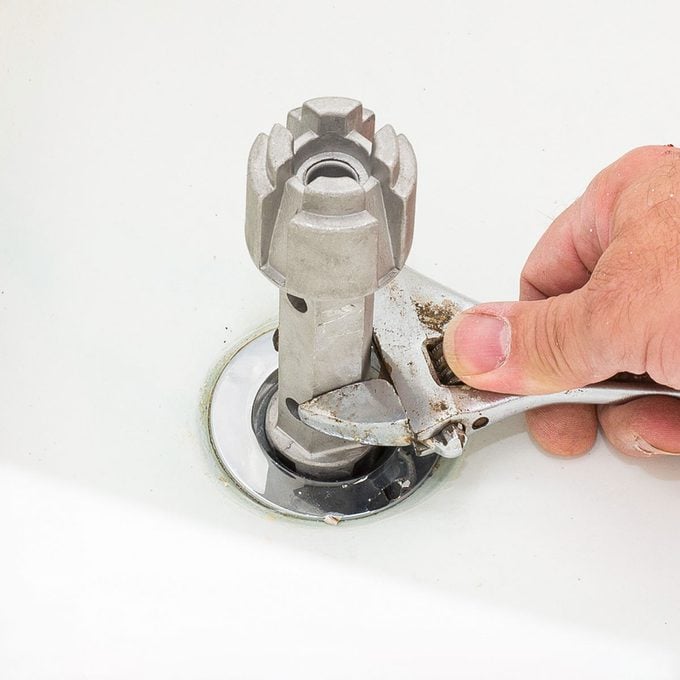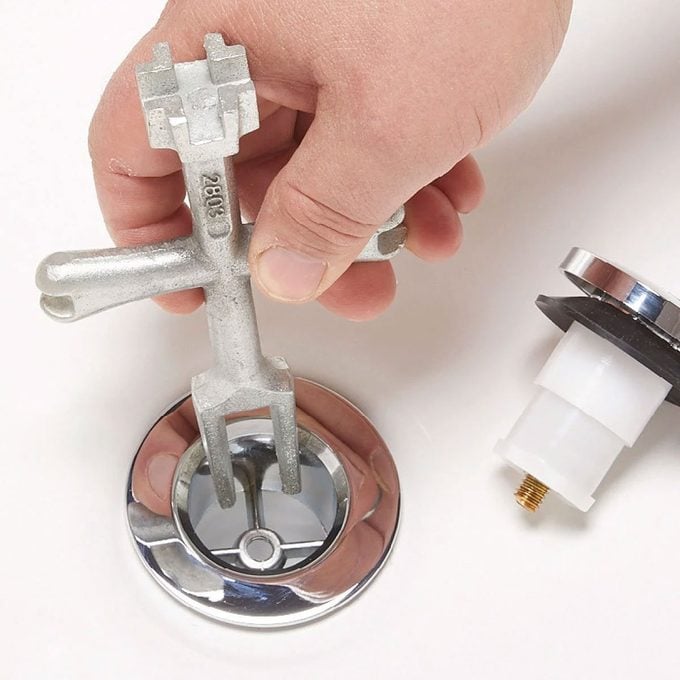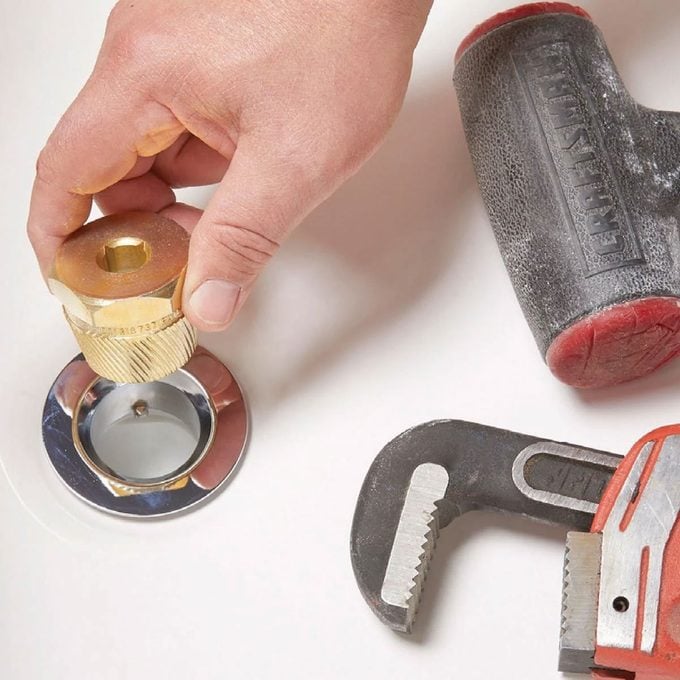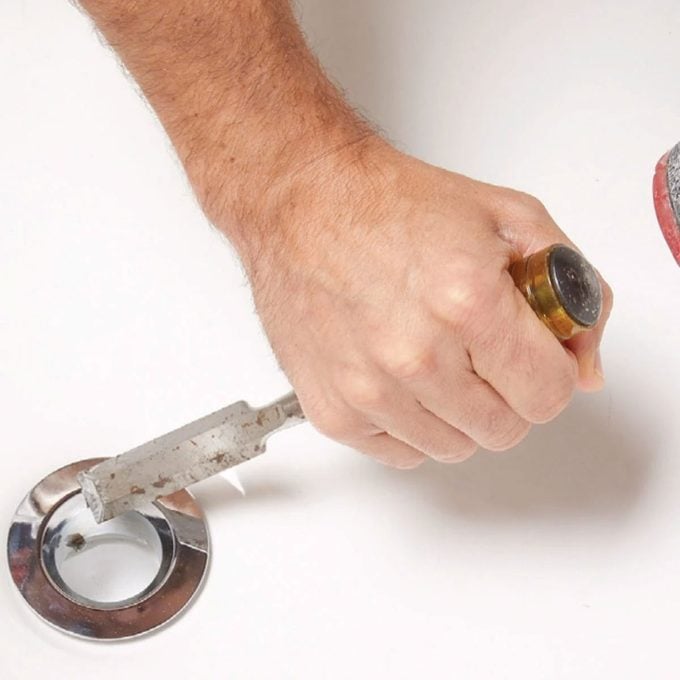How To Remove a Bathtub Drain
Updated: Feb. 12, 2024
Follow our step-by-step guide for hassle-free maintenance and repairs.

Removing a bathtub drain can be an easy or difficult DIY task. In my experience, no two drains are alike, so it’s helpful to have a variety of tools and techniques at your disposal.
I’ve removed many tub drains when replacing and refinishing bathtubs in my home or rentals. With the help of two plumbing experts, Alexander Siv from Amherst Plumbing and Heating and Liam Hogan from Hogan Mechanical Incorporated, learn how to remove any bathtub drain with a minimum of fuss.
On This Page
About the Experts
Alexander Siv is a licensed plumber and owner of Amherst Plumbing and Heating in Amherst, Massachusetts.
Liam Hogan owns Hogan Mechanical Inc. in Agawam, Massachusetts. He’s a licensed plumber with five years experience.
What Is a Bathtub Drain?
The term ‘bathtub drain’ can refer to the drain flange or drain assembly. Here, we’ll refer to the drain flange as the ‘bathtub drain’ and the entire drain system as the ‘drain assembly.’
A bathtub drain flange is the circular, metal basket set into the tub floor that creates a water-tight connection between the tub surface and the rest of the drain assembly parts. The drain assembly consists of the drain flange, drain shoe, drain body, overflow and stopper.
“Drain flanges are commonly referred to as the drain, but are just one part of a drain assembly,” says Siv.
Why Would You Need To Remove a Bathtub Drain?
It’s necessary when you’re replacing or refinishing a tub, or when replacing, cleaning or updating the drain. There’s no way around it.
Precautions To Take Before Removing a Bathtub Drain
Close any shut off valves to the tub’s water supply pipes. To protect the tub from chips or scratches, lay a cloth or cardboard on the tub floor, then clear any obstructions in your work area. Dropped tools can easily damage the tub floor.
Gather all your tools and materials and read the owner’s manual for the new drain. Wear protective gloves and eyewear.
How Much Does It Cost To Replace a Bathtub Drain?
To just replace the drain flange, expect to pay a plumber $150 to $300. If you do it yourself, it will cost $20 to $60 for the new part.
According to Siv and Hogan, a plumber will charge $300 to $500 to remove and replace a bathtub drain assembly if the drain is leaking or cracked. “If it is on a second floor with no access from below, the cost could run higher,” Hogan says.
Tub drain assemblies can range from $20 for a PVC model to $100 for a brass drain and overflow.
Tools Needed To Remove a Bathtub Drain
Gather some or all of the following:
Tools
- Flathead or Phillips head screwdriver;
- Drain wrench;
- Drain extractor;
- Chisel;
- Hammer;
- Adjustable wrench.
Materials
- Latex gloves;
- Protective eyewear;
- Drop cloth or cardboard.
How To Remove a Bathtub Drain
“Which tools you need, and the effort required will depend on the condition of the drain,” Hogan says. Here are the steps to remove even the most stubborn bathtub drain.
Remove the drain screen or stopper
If the tub drain contains a stopper that manually opens and closes, often twisting the moveable top counterclockwise will remove it. Sometimes there’s a set screw or center bolt that also needs to be loosened or removed.
If the tub has a visible drain stopper moved by a lever on the overflow plate, carefully pull the stopper and the attached metal arm from the drain.
If instead of a stopper there’s a screen affixed over the drain, the stopper is inside the overflow pipe. Pry up the screen with a screwdriver or loosen the center set screw to remove.
Use a drain wrench

Once you’ve removed the stopper or screen, inspect the drain. If the drain has crossbars, use a drain wrench.
Fit the end of the tool with the crossbar depression onto the drain’s crossbars. Insert a screwdriver into the hole at the top of the tool, or fit an adjustable wrench onto the hexagonal section. Grasp the screwdriver handle or wrench and turn counterclockwise to remove the drain.
If the drain doesn’t move, try applying heat to soften the plumber’s putty between the flange and the tub surface.
Use a drain extractor

If your drain lacks crossbars, use a drain extractor. Place the threaded part of the tool inside the drain with the hexagonal part facing up. Tap the tool with the hammer to wedge it into the drain. Avoid using too much force or risk damaging the tub.
Once in place, tighten the adjustable wrench around the hexagonal top of the drain extractor. Turn counterclockwise to remove the drain. “Work carefully to avoid scratching the tub floor with the wrench,” Siv says.
Use a chisel and hammer

Older drains can fuse to the tub and are more difficult to remove. When this happens, use a chisel and hammer to get things started, then grab the drain wrench or extractor.
Place the chisel against the inside wall of the drain near the flat top of the flange. Hit the chisel handle with the hammer, directing the force to move the drain counterclockwise, if possible. Strike several medium strength blows to the end of the chisel. This should loosen the drain enough so it can be removed with a drain wrench or excavator.
“If you’re going to use a chisel and hammer,” Hogan says, “make sure to buy a new flange because the old one will get damaged.”
